Lang & Heyne Anton Tourbillon
German high-end watchmaking, Art Deco style and feat through the caseback!
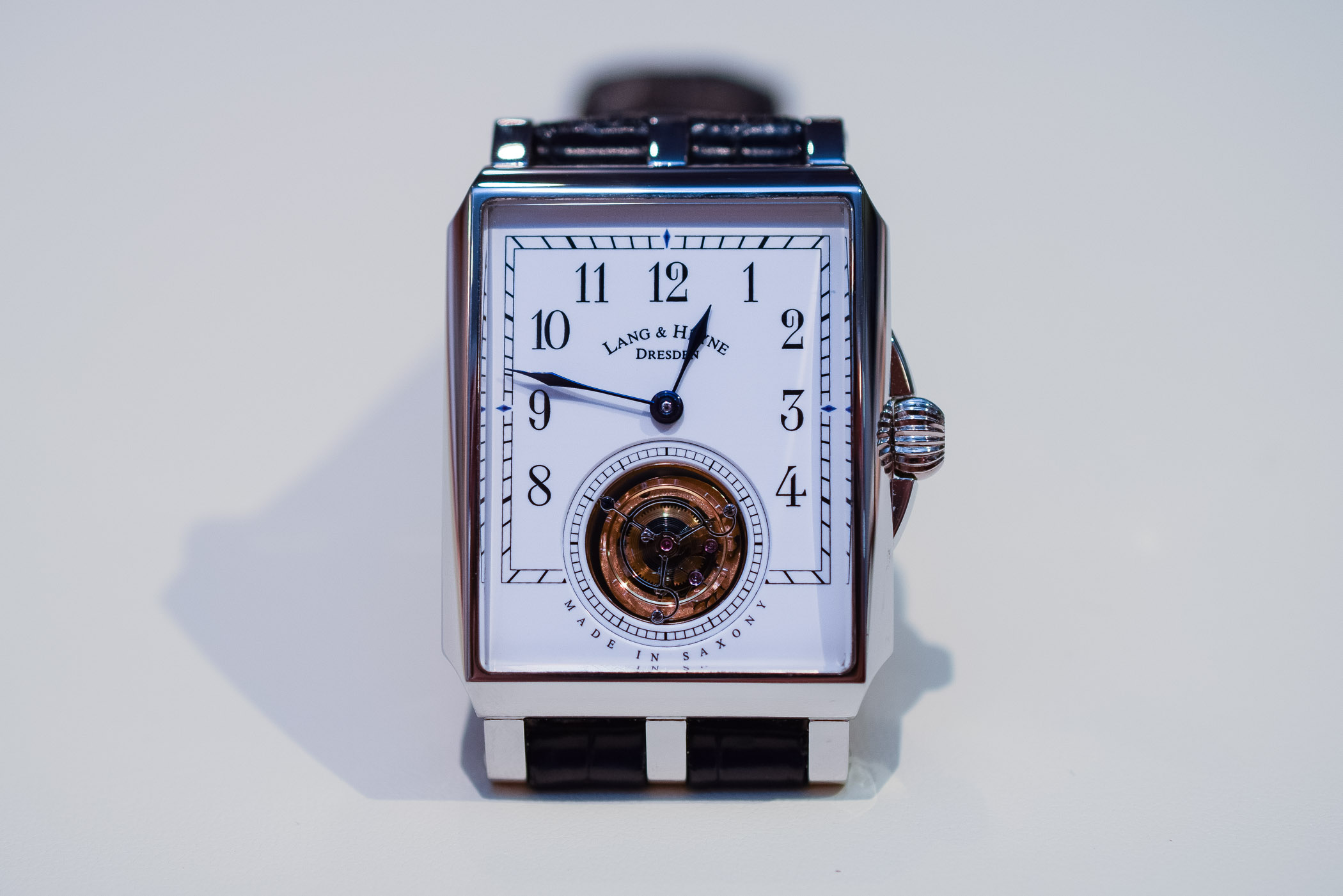
There is something quintessentially appealing about German high-end watchmaking. Often understated, elegant designs fitted with complex yet superbly finished movements, you can spot them amongst their Swiss counterparts quite easily. One of those German brands is Lang & Heyne, based in Dresden, which last year has introduced its rectangular watch called Georg. For this year, the Saxon watchmakers introduce the Lang & Heyne Anton, with a tourbillon movement set inside the same rectangular case.
Background
Marco Lang, the driving force behind the Lang & Heyne Manufacture, found his way into watchmaking through his father’s profession. A fifth-generation watchmaker, Marco Lang started out as an apprentice precision engineer in Glashütte. This historical watchmaking town in Germany was of such influence on him that he eventually became an apprentice for Northern German-based watchmaker Ihno Flessner, after the unification of East and West Germany. After seven years as an apprentice and assistant, Marco Lang returned to Dresden to pursue and continue his family tradition.
After meeting talented watchmaker Mirko Heyne in 2001, the duo launched the Lang & Heyne Manufacture. Only a year later, despite Mirko Heyne’s departure, the first watches were introduced during that year’s Baselworld fair; the Lang & Heyne Friedrich August and Lang & Heyne Johann. These classically styled watches featured the now distinct triple lug case with the in-house developed hand-wound Calibre I, a tribute to historical Saxon pocket watch movements with three-quarter plates, a swan neck regulator, hand-bevelled and black-polished edges on the anchor bridge and balance cock, a stop-seconds mechanism. We are really talking some excellent levels of detailing here, in that distinct German manner.
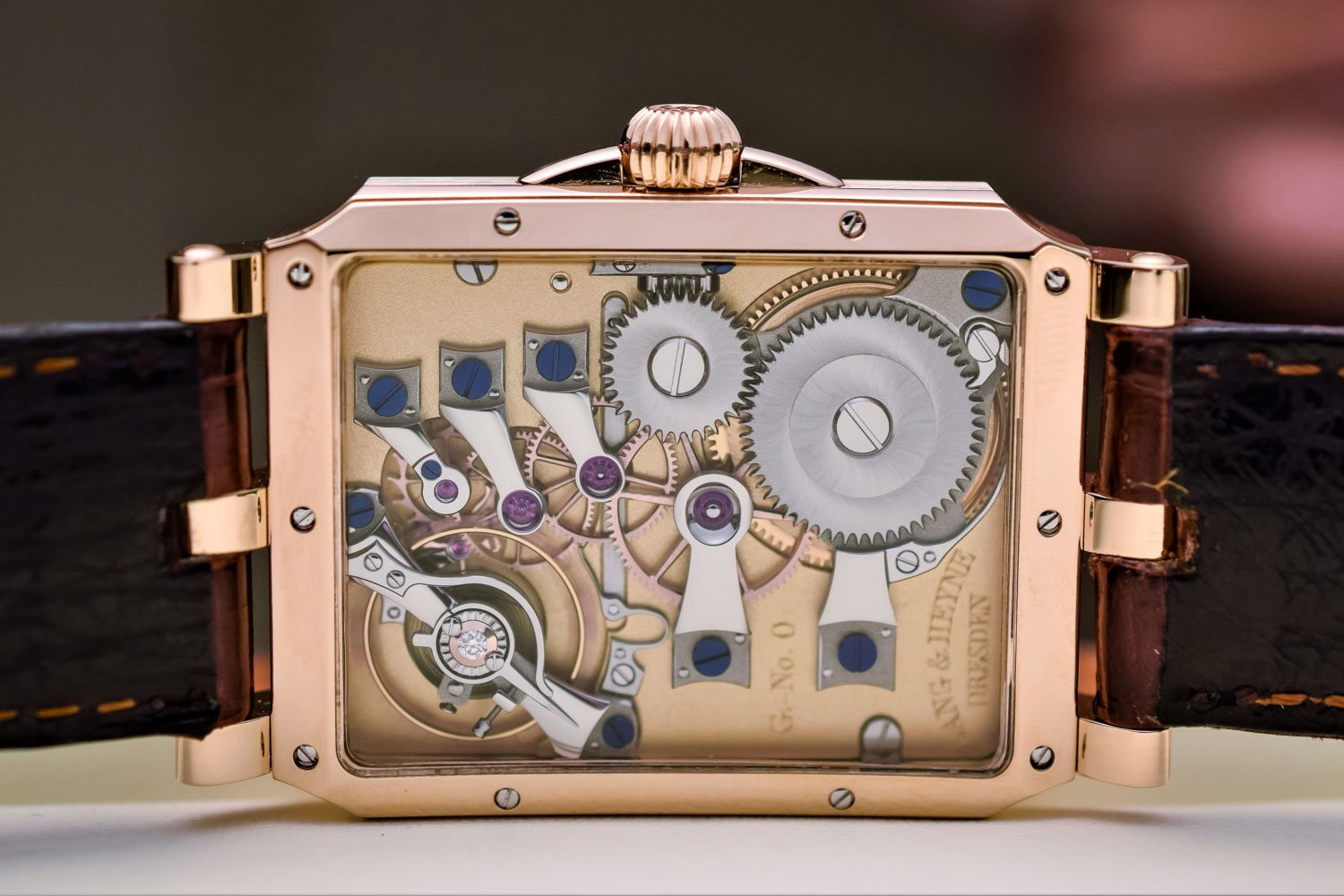
Besides the triple lug design or the diamond on top of the balance wheel, another signature element of the manufacture are the historical figures the brand’s watches are dedicated to. Each watch bears the name of former margraves, electors, dukes and kings from the Wettin house, one of German’s oldest noble families. These historical rulers of the Saxon region are portrayed on tile mosaics in the historic centre of Dresden, known as the “Procession of Princes” and spans a bloodline from 1123 to 1904.
Ever since the first collection was introduced, some seventeen years ago, the brand has embodied the Saxon watchmaking spirit to the fullest. Extremely elegant, clean and classical designs, highly refined and impeccably finished movements, sometimes with a little twist (like a movement with an ivory mainplate), but never straying from the original intention. This venture culminated in the admission of Marco Lang in the AHCI (Académie Horlogère des Créateurs Indépendants) in 2005, after a three-year candidature.
An Evolution of “Georg”
We’ve briefly touched on the Lang & Heyne Georg earlier this year, sharing our thoughts about German watchmaking and what makes it unique. The Lang & Heyne Georg is the first rectangular watch by the Dresden-based team that forms Lang & Heyne. It featured a sloped bezel, the Lang & Heyne signature triple lug design, and a superbly, architectural and clean rectangular movement design. Lang & Heyne, however small a manufacture with less than 100 watches a year, pays attention to the smallest details and strives for technical perfection in its creations.
The Lang & Heyne Anton
The Lang & Heyne Anton is a logical step after the Georg, however, quite an achievement considering it is the first tourbillon movement coming out of the manufacture. It features the same case design and also that beautiful Grand Feu white enamel dial, paired with a flying tourbillon movement. The large flying tourbillon escapement, measuring 11.1mm across, is visible on the dial side through a sunken aperture in the bottom part, where the small seconds indication was positioned in the Georg. This large aperture allows for a great view of the regulating organ of the Lang & Heyne Anton.
The movement for the Anton is the Calibre IX, which follows the rectangular shape of the case. Even though many of the specifications are comparable to the Calibre XIII movement of the Georg, a few things set this apart, most obviously the tourbillon. It gains a little in height to accompany the extra space needed for the tourbillon escapement, and position of the bridges and some parts of the running gear has been slightly reworked. The balance wheel on the upper left corner when looking at the movement has been removed of course, which results in an even more restrained look.
The beauty in most movements by Lang & Heyne is the cleanliness of their builds. A feeling of air if you will, with lots of free space surrounding the essential parts, the movements are superbly designed and finished. Most of the running gear-train is visible from the back, with plenty of spacing, but never seems out of place or intentionally pushed to the edge for the sake of a view.
The highest levels of finishing are used on each Lang & Heyne watch, including the movements. You can find most of the traditional finishing techniques. Techniques like silver grinding on plates or bridges, where a special mixture is applied to brass parts with a stiff bristled brush, resulting in a very fine grainy finish before being gold-plated. Originating from the 18th century, this technique is rediscovered by Lang & Heyne and results in a superbly smooth finished surface.
Other techniques incorporated into the movement are single-sided steel bridges holding parts of the gear-train in place, black polishing, hand chamfering, rubies set in hand-polished gold chatons, a hand-bent Breguet balance spring, 18k, hardened solid gold wheels with hand-chamfered spokes and completely hand-crafted screws flame-blued in a violet tone (only 12 to 15 made by a specialist, per day). A finishing touch to the movement is the placement of two diamonds adorning the engraved name of the brand on the upper part of the mainplate.
The Lang & Heyne Anton comes with a Grand Feu enamel dial in two parts, with the large tourbillon escapement visible in a sunken aperture at 6 o’clock. The dial is adorned with a square-shaped minute track printed in black, with diamond-shaped markers at 12, 3 and 9 o’clock (in a subtle blue tone) and Roman numerals for each hour between 8 and 4. The aperture for the tourbillon is finished with a small seconds track on the recessed edge, printed in black. The dial is furthermore adorned with the brand name on the top part of the enamel dial and a curved “made in Saxony” around the bottom of the tourbillon aperture.
Tradition also plays a role when it comes to selecting the hands for each Lang & Heyne, whether it be the spade-shaped, cathedral or lancet-style hands. For the Lang & Heyne Anton, the hands are finely shaped in a lancet style, either in blued steel or gold, depending on which case material is selected. The small seconds indication of the Lang & Heyne Georg has been replaced by the tourbillon escapement in the same location, with a single blued screw on the edge of a lyre-shaped tourbillon cage doubling as a seconds indicator.
The rectangular case for the Lang & Heyne Anton measures 40mm x 32mm with a thickness of 9,4mm. Comparing this to its older brother, the Georg, the dimensions are identical, despite the tourbillon movement being slightly thicker. The case, the triple lug design and sloped bezel embrace Art Deco style. Just as with most watches by the manufacture, the case is available in precious metal only; 18k rose gold or platinum. The watch is fitted with a sapphire crystal on both sides and comes on a brown or dark blue alligator leather strap fitted with a matching metal pin buckle with an engraved logo. Besides these pre-selected options, requests for strap colour, buckle type, set of hands or custom engravings can all be catered to.
Obviously, this level of watchmaking does not come cheap, and the increase from the hours-minutes-seconds only Lang & Heyne Georg, priced at EUR 26,400 is significant. The Lang & Heyne Anton starts at a price of EUR 86,100 in rose gold and EUR 98,700 in platinum. For more information, Lang&Heyne.de.

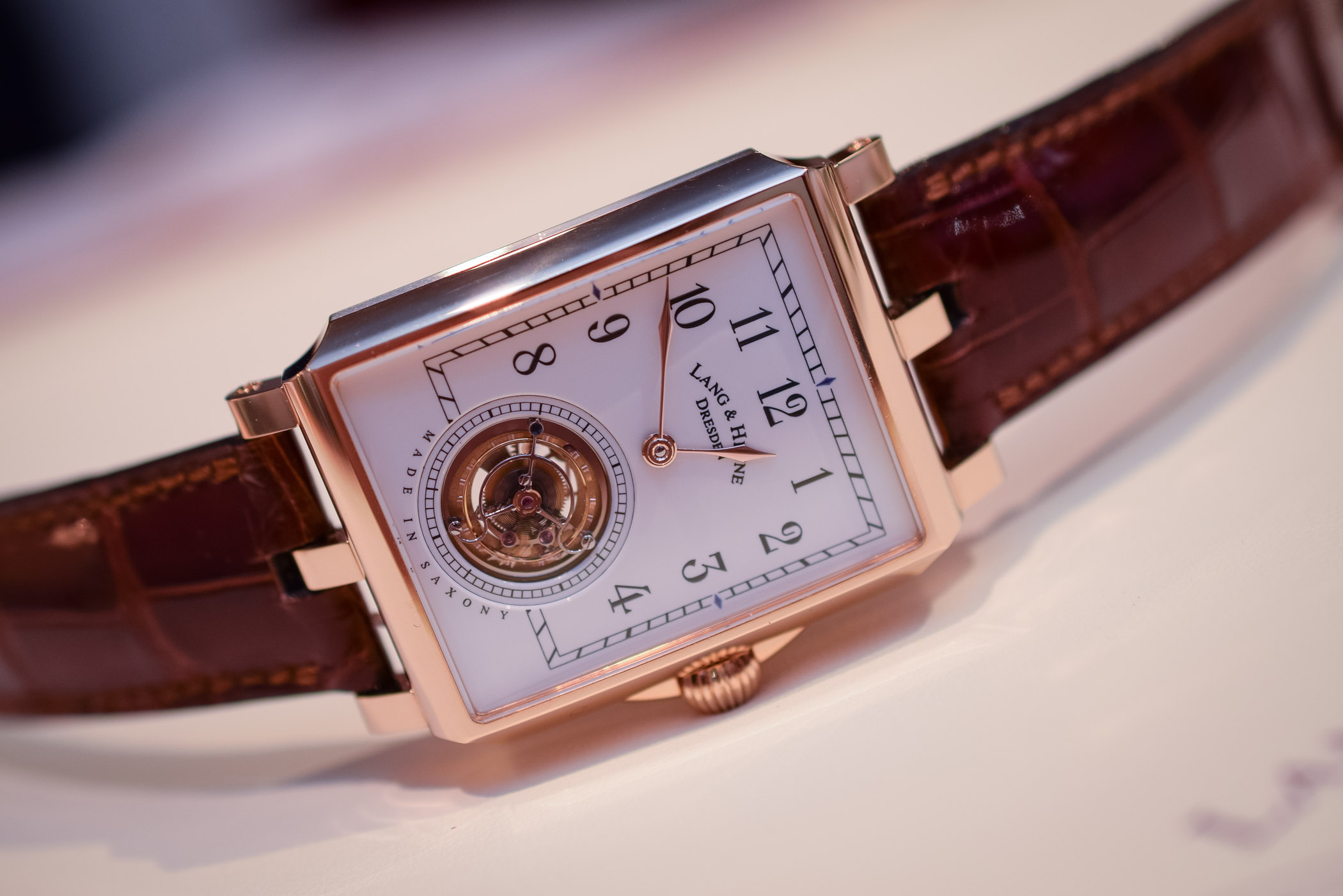
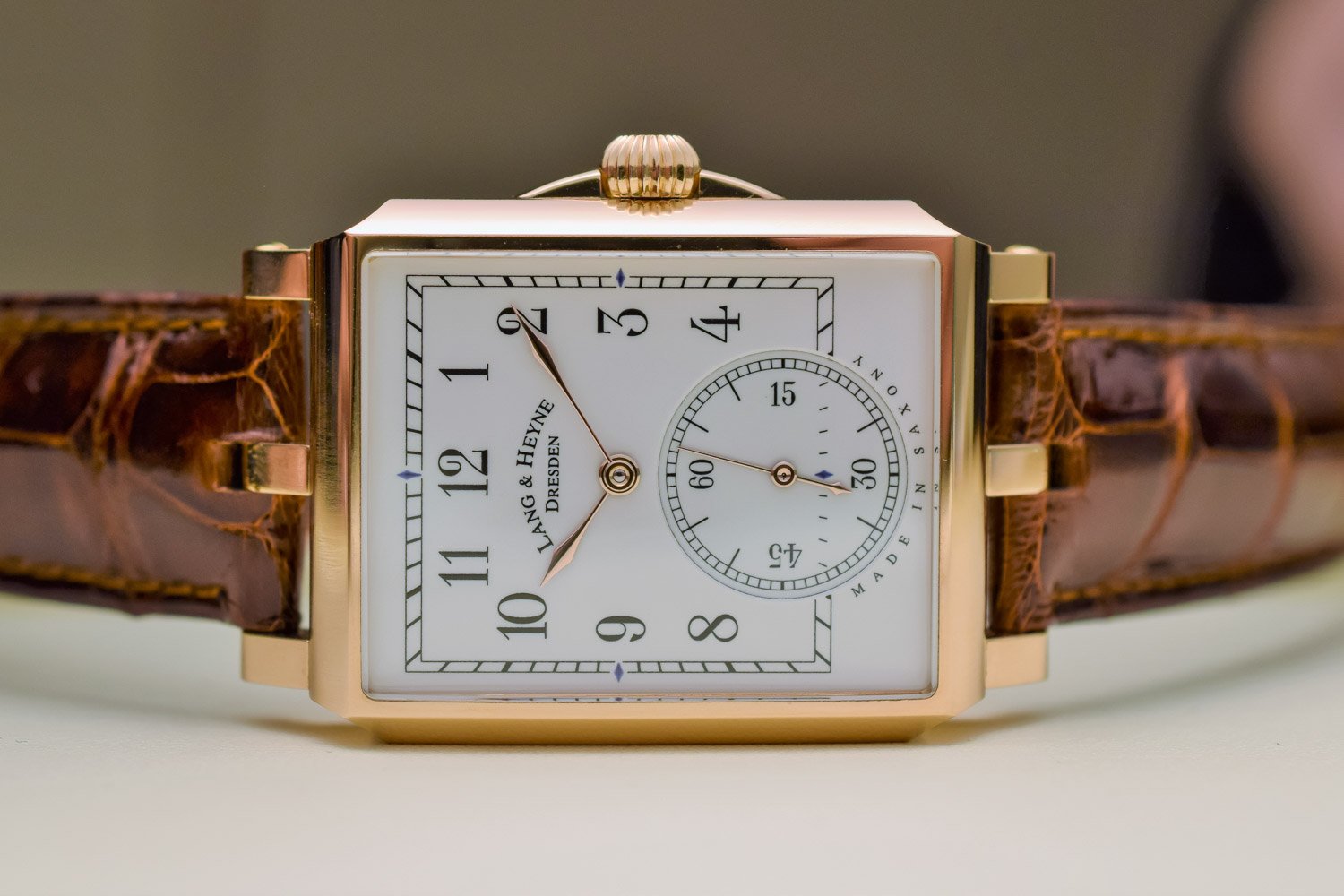

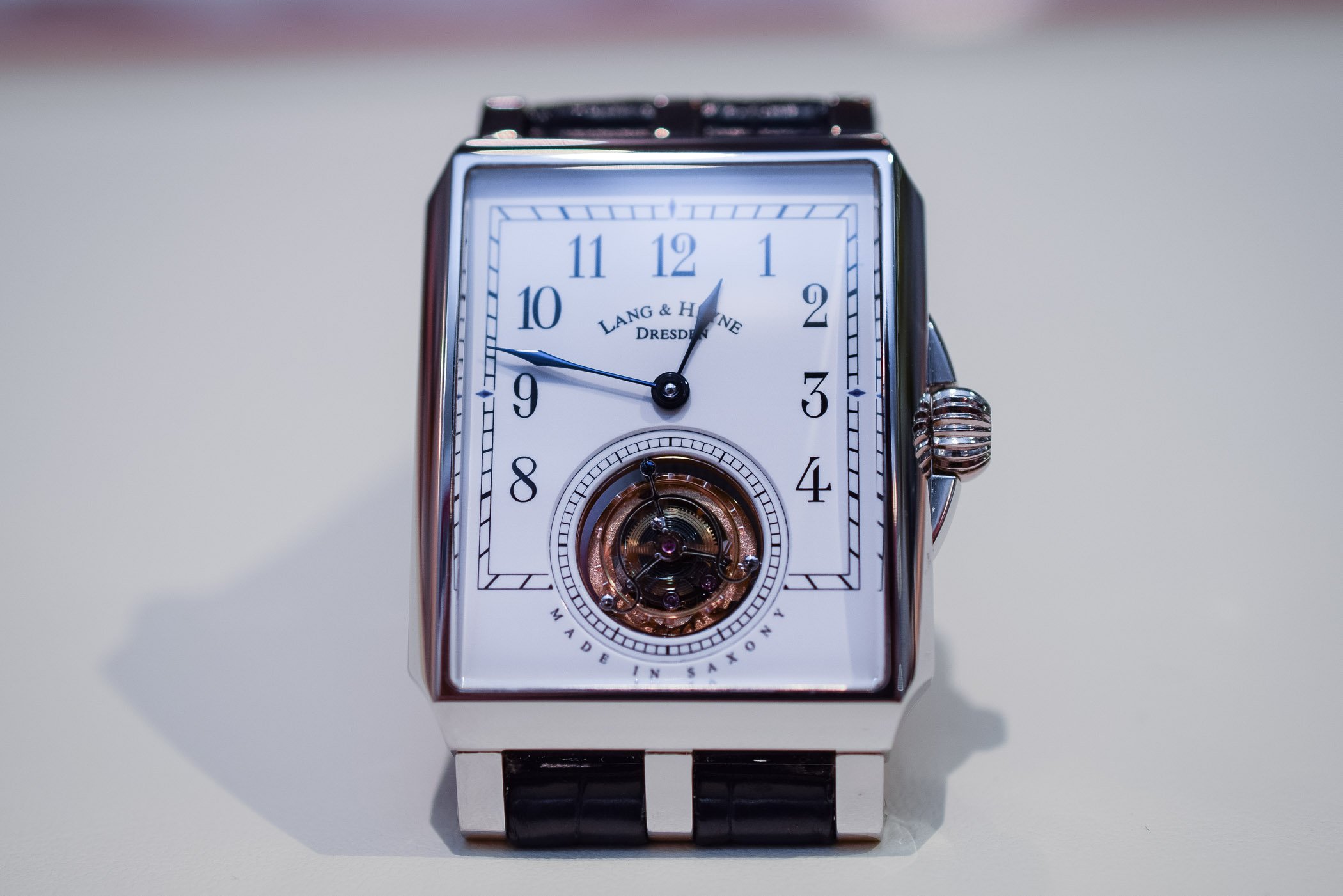
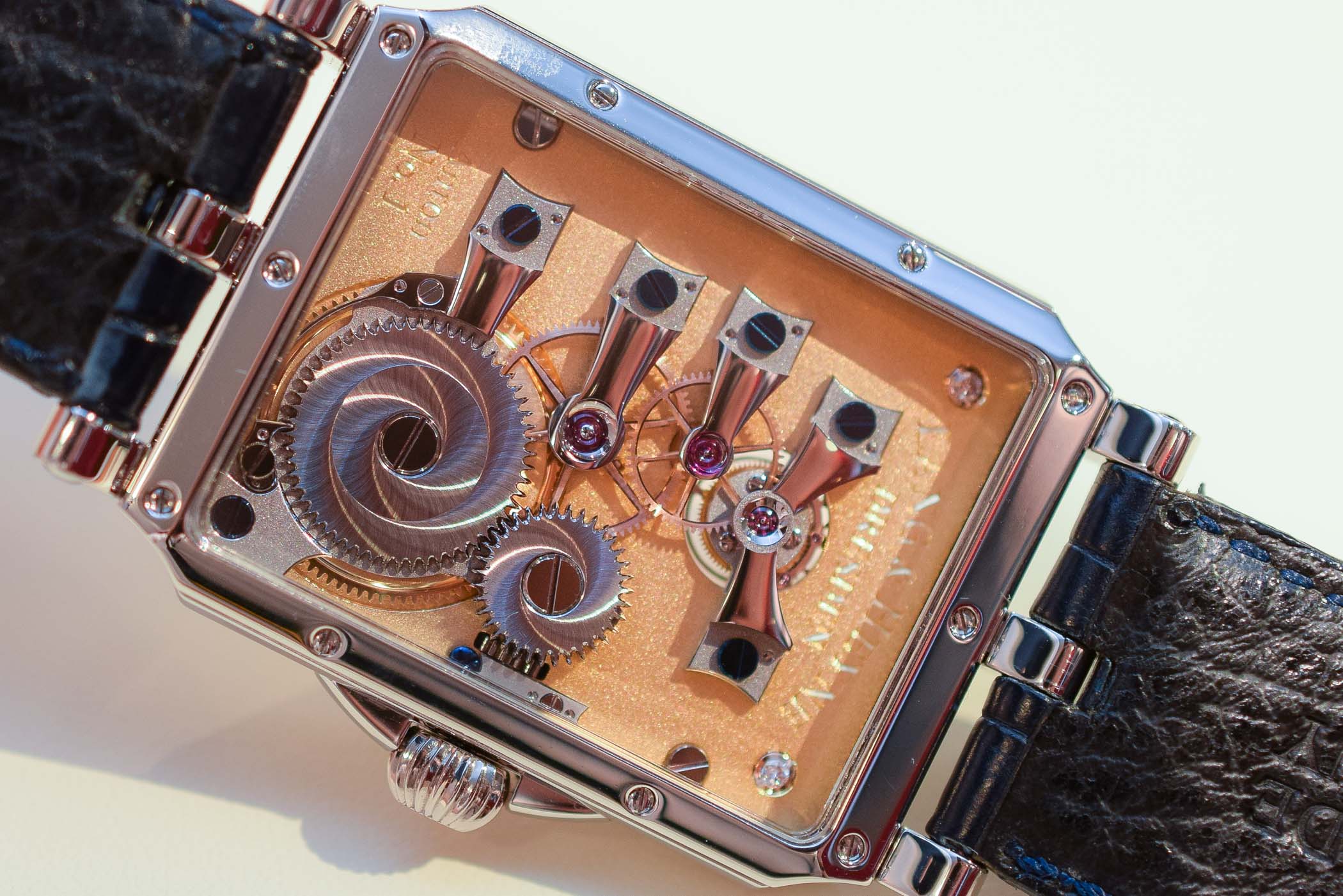
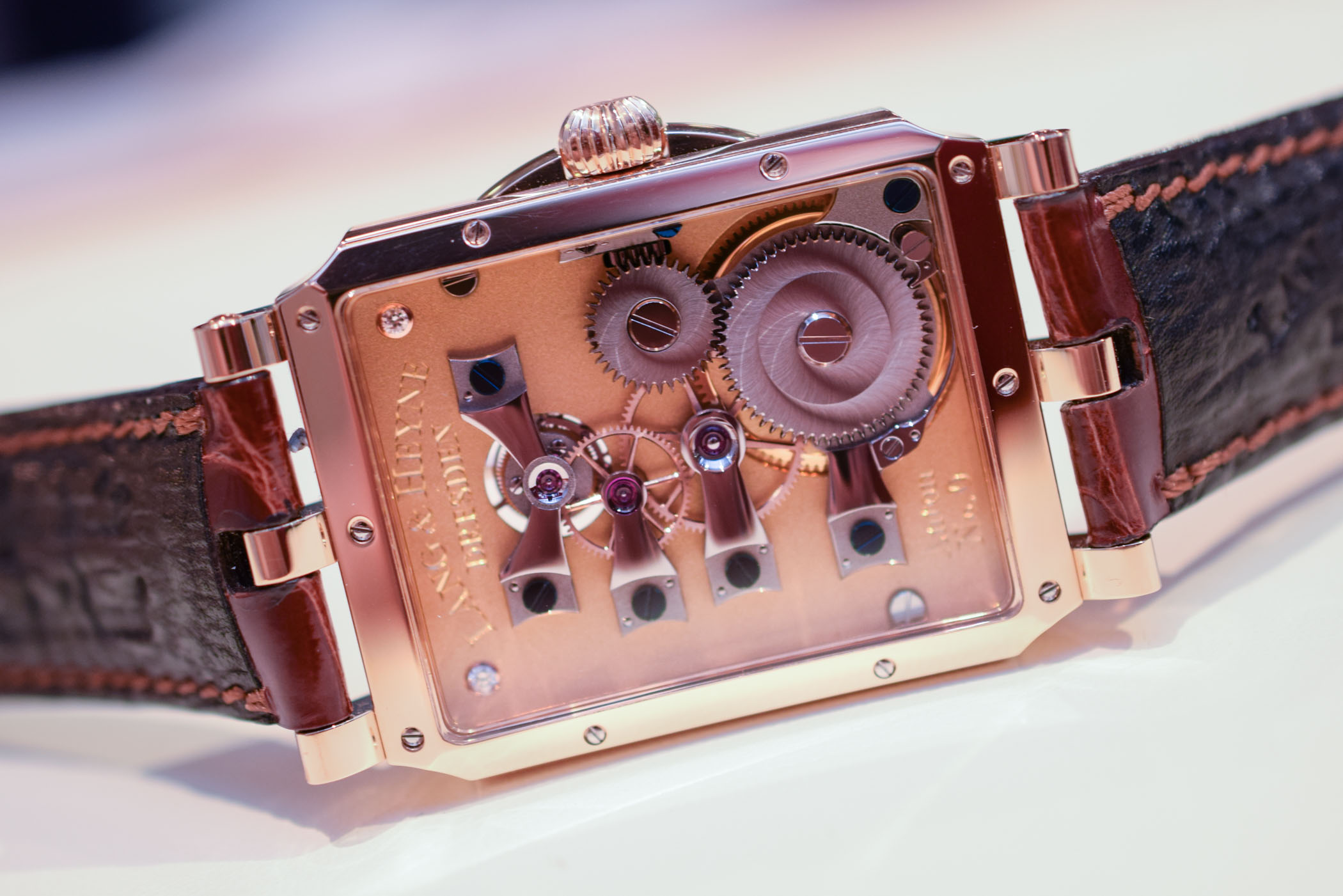
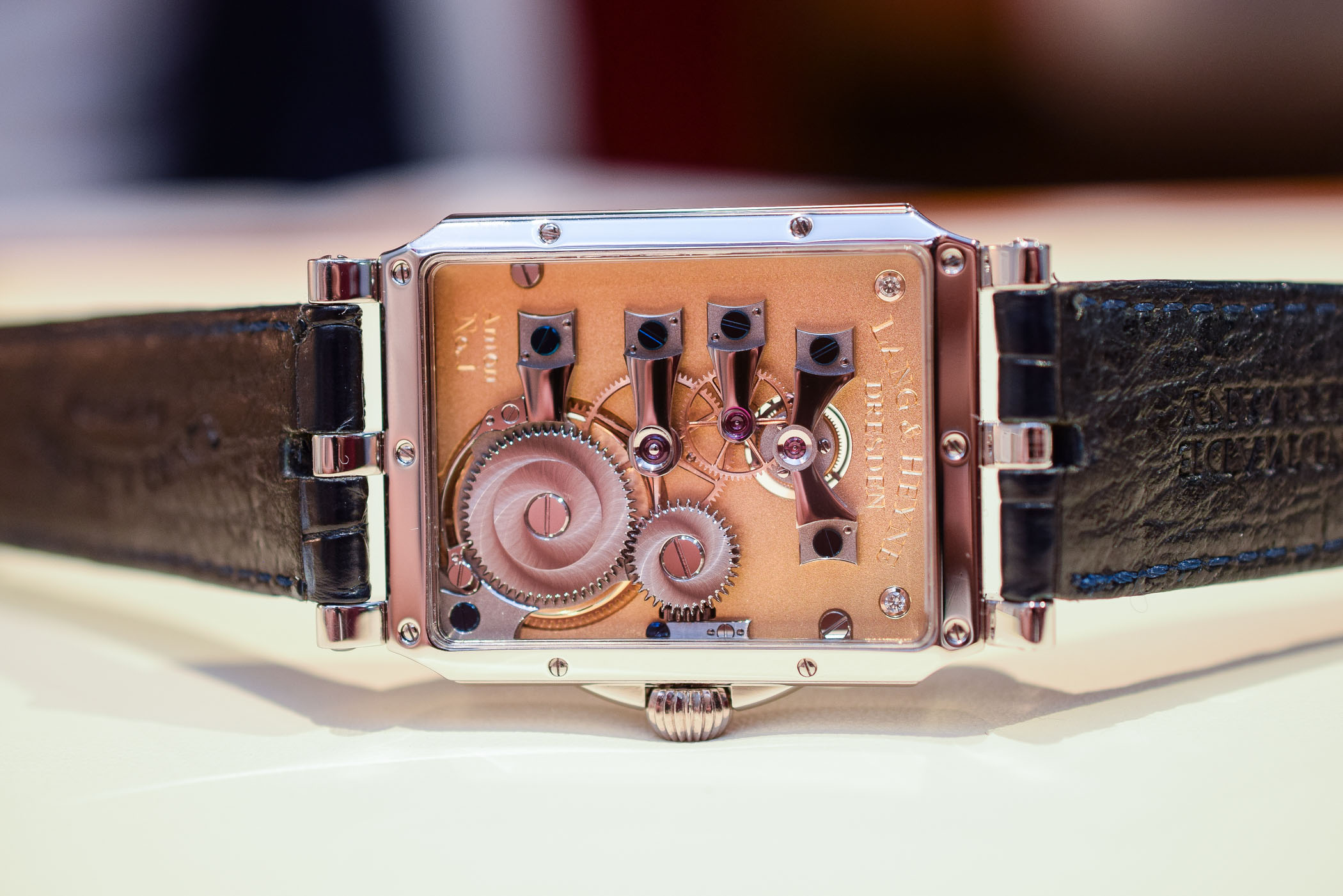

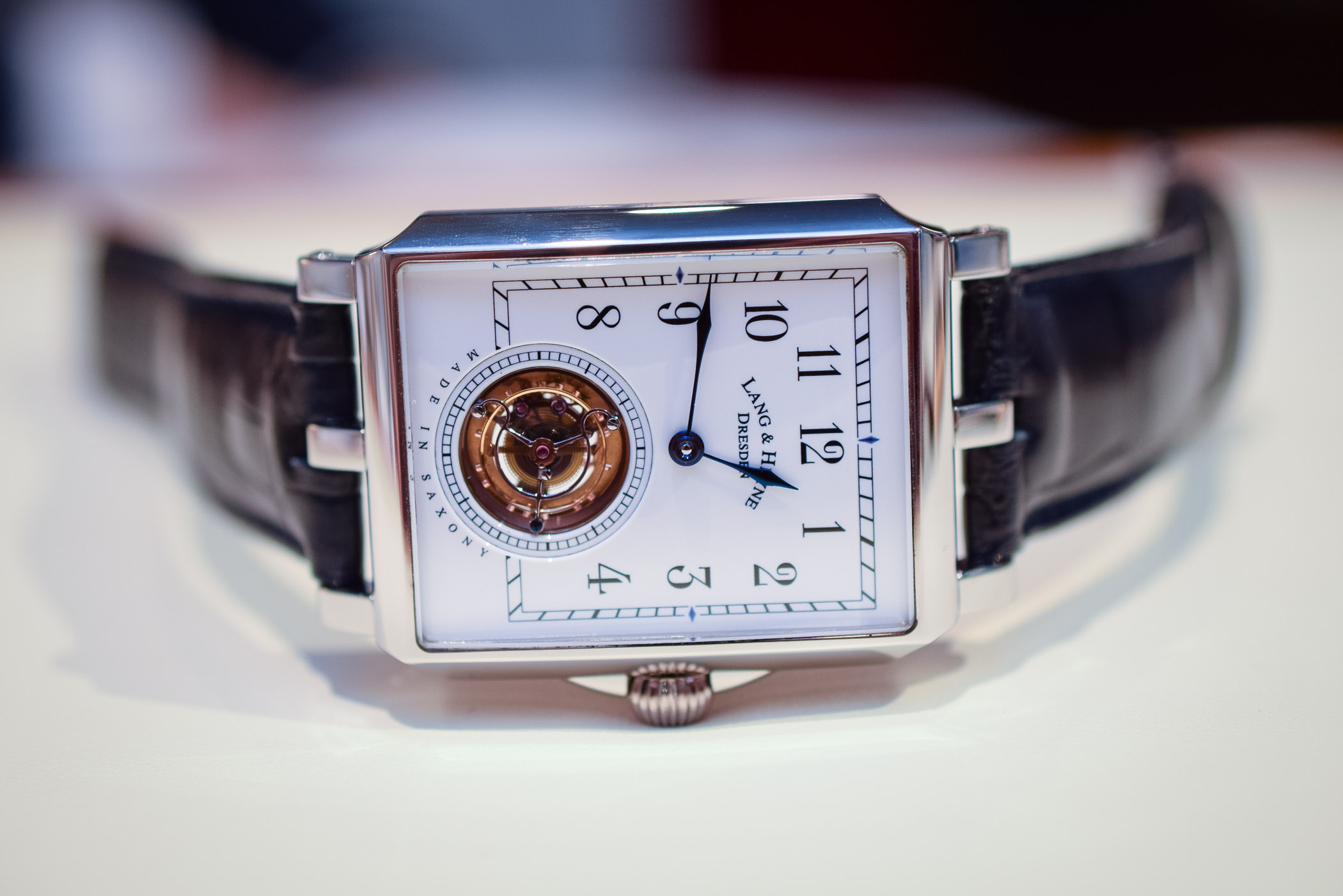
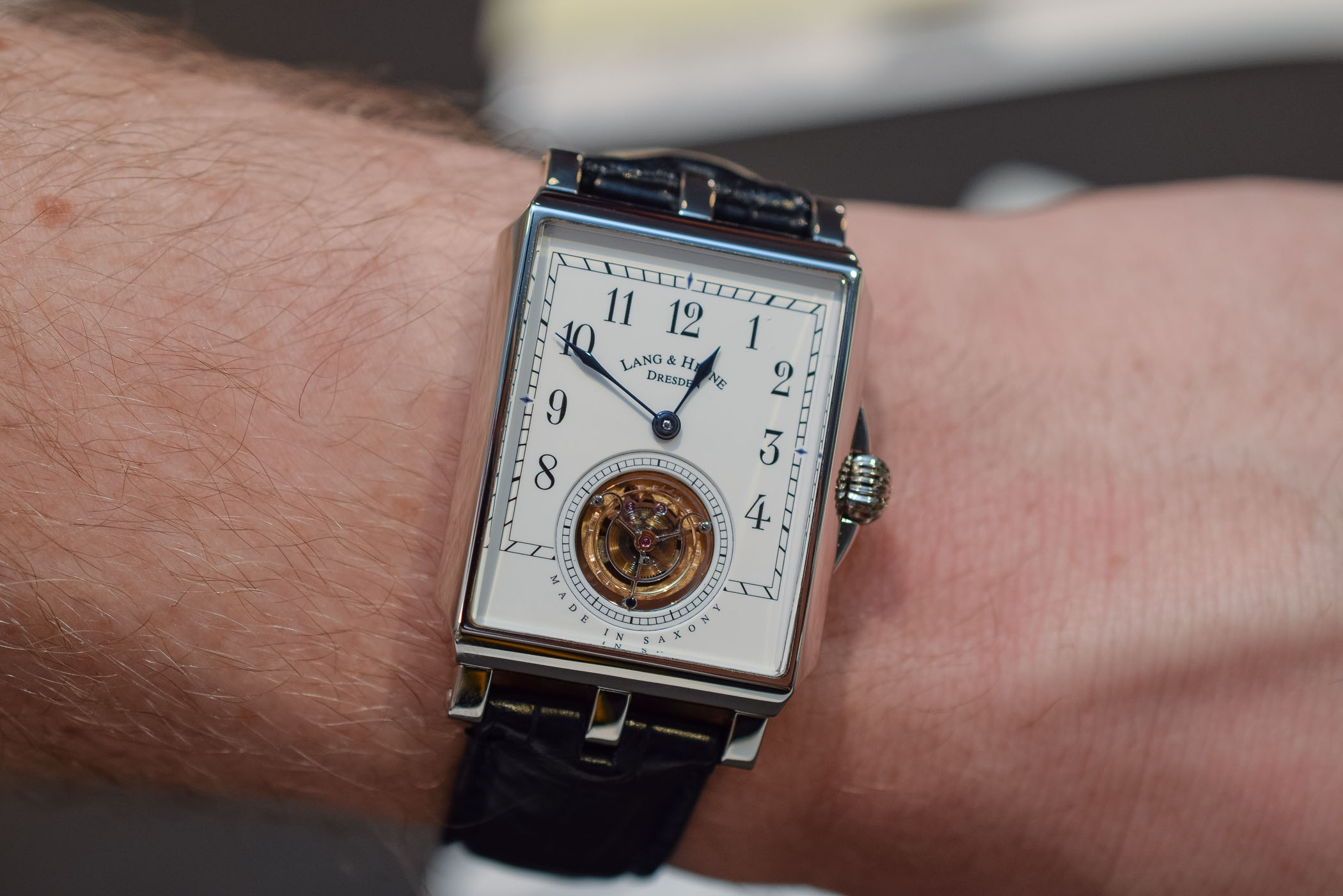




3 responses
Well I learned of a new, magnificent manufacture today and confirmed the fact that the open tourbillon only serves to ruin a dial.
This is the new craze. The new way for companies to increase revenue.
It doesn’t work.
I am tempted to agree with just another guy, but there are distinctions to the plethora of watches just like this. This watches back is quite unique, with a look that definitely defies tradition and that I find very successful. I am generally influenced by tradition and horological classicism, which this watch does quite well. It seems just a bit too large however, and may feel thick (no real side views are presented). While of dubious value, the tourbillon is very finely crafted and provides a view other than this watches single complication.
Such lovely movements Lang & Heyne make.